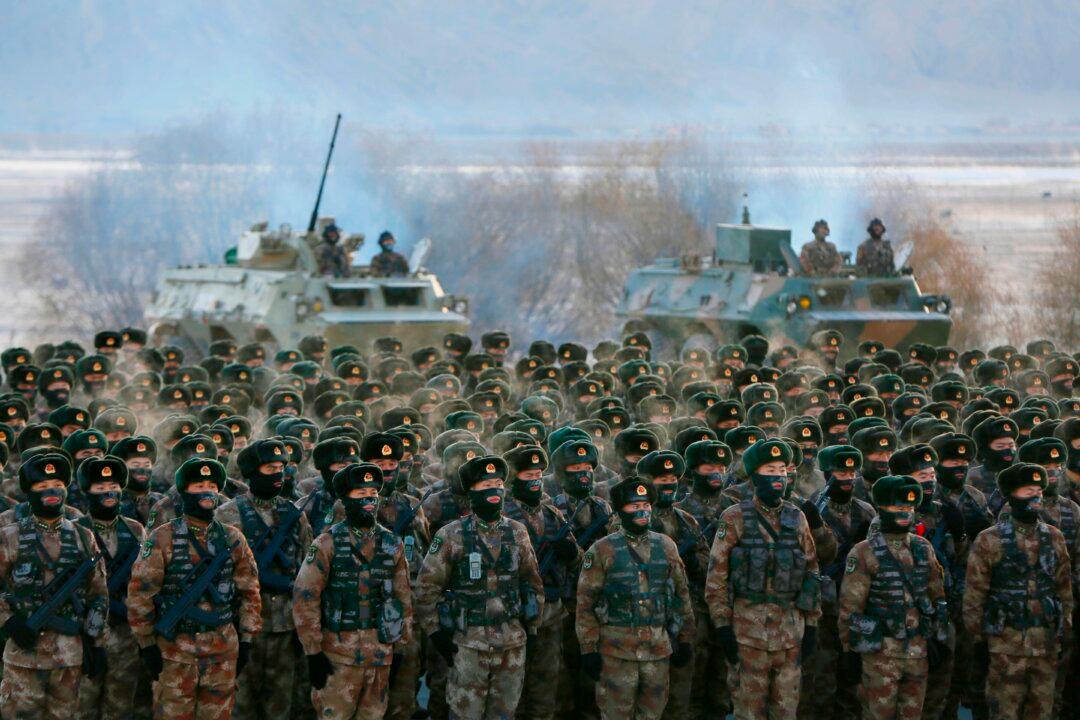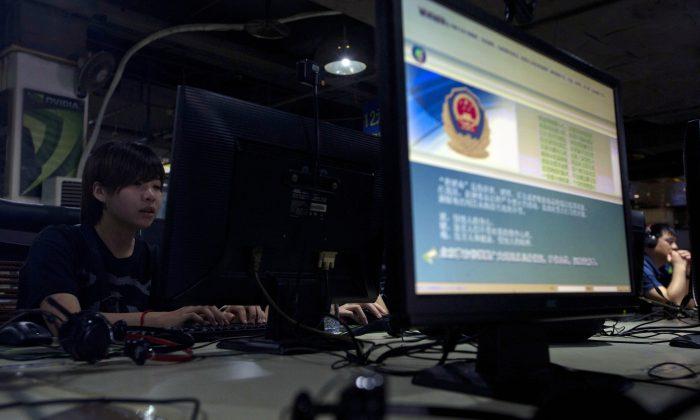Commentary
Chinese military drones are on a tear around the world. They harass Taiwanese soldiers, are sent to Russia as kits to evade sanctions, and come disguised as massive wind turbines for illegal shipment to a Libyan warlord. Their ubiquity on global battlefields, and ease of manufacture in China, should have the U.S. military and our allies very concerned and increasingly busy.
The drones sent to Libya were intercepted by Italian tax police and customs officials. Libya is under a U.N. arms embargo due to civil war, which is why the Chinese Communist Party (CCP) disguised the shipments. According to Italian officials, “The components were hidden among composite material replicas of wind turbine blades to conceal them and avoid checks.” How environmentally conscious.
The drones, shipped in multiple containers on two ships, were 33 feet long, weighed 3 tons, and had a 66-foot wingspan. They were most likely Chinese Wing Loong II unmanned aerial vehicles (UAVs) capable of deploying 12 laser-guided missiles. The disguised drones were intercepted while on their way to General Khalifa Hifter, according to a July 2 report by Defense News. Gen. Hifter reportedly supplies Russian military operations in Africa.
The CCP is developing a new attack drone similar to the Shahed 136 exploding kamikaze drone produced in Iran. The Chinese version is called the “Sunflower 200,” which is apparently a tasteless reference to Ukraine’s national flower. The Sunflower 200 is likely the same attack drone under joint Chinese-Russian development.
Chinese military drones are reportedly already being sent to Russia in kit form to evade laws against sending military materiel to Russia. That would fit Beijing’s recent illicit provision of dual-use military equipment and services. According to Bloomberg, China has since April provided Russia “with satellite imagery for military purposes, microelectronics and machine tools for tanks, as well as a swath of technologies used in weapons.”
China’s drones are a particular concern in Asia. A Chinese military drone recently hovered near the airport of Taiwan’s remote Matsu island, according to Taiwan’s military. The Defense Post reported the incident on July 3. Taiwan frequently faces such “gray zone” incursions from Chinese military and civilian drones. The tactics are calibrated to “boil the frog slowly” by harassing Taiwanese troops without provoking them into defensive actions. Beijing wouldn’t want to heat the pot too fast, causing the frog to jump out.
Drones are increasingly common in the Taiwanese theater of operations. In April, Chinese civilian drones reportedly harassed Taiwanese soldiers on the island of Erdan. Taiwanese soldiers shot down an unidentified Chinese civilian drone in 2022 over Kinmen Island. In self-defense, the United States and Taiwanese special forces soldiers reportedly utilize hand-held military surveillance drones against the mainland.
Unfortunately, China’s drones are a good value for the money. Just one company, DJI, produces three-quarters of the world’s civilian supply. They are relatively advanced, inexpensive, and can be altered for military use, as demonstrated on the battlefields of Ukraine. They fit what Taiwan would like to have as a deterrent against a Chinese invasion, with few alternatives for the price. It should worry the United States and our allies that those alternatives cost as much as 20 times the Chinese equivalent due to China’s larger manufacturing base and ability to achieve scale efficiencies more quickly.
This is why the United States and allies must shift supply chains away from China and toward allies in what has been called “friendshoring.” We can’t use Chinese drones to defend Taiwan, for example, because Beijing could mandate the installation of remote kill switches controlled by itself or design its drones to be hacked through backdoors and used against Taiwan in its hour of need.
So Taiwan’s military has proposed purchasing 3,200 drones from non-Chinese private contractors for $175 million over five years. That will help eliminate its reliance on what it calls the “red supply chain” of China.
But more is needed for global defense. The U.S. Defense Department, which used to buy Chinese drones, has a new strategy against the Chinese regime’s massive drone capacity. Called the “Replicator” initiative, the billion-dollar program will deploy “thousands of autonomous systems” across domains such as air, sea, space, and land within two years. On June 19, the U.S. State Department approved a $360 million package that includes about 1,000 drones, including “Switchblade” loitering munitions.
These, along with U.S. Reaper drones, could be critical to swarming and defeating Chinese naval forces as they invade across the Taiwan Strait. The Reaper is a large drone that could be armed with anti-ship missiles. Along with traditional air and naval power, it could target invading ships at sea, while the Switchblades mop up any troops that manage to wade ashore. Taiwan could also be purchasing drones from Israel, and developing its own military UAVs and anti-drone systems.
It will take a global supply chain of democratic countries—including Ukraine if its increasingly experienced defense industry can ever get out from under Russia’s boot—to defend all of our democracies around the world from the Chinese regime’s massive defense industry. So let’s get busy with winning and preparing for the next big thing. Peace through strength is the order of the day.





